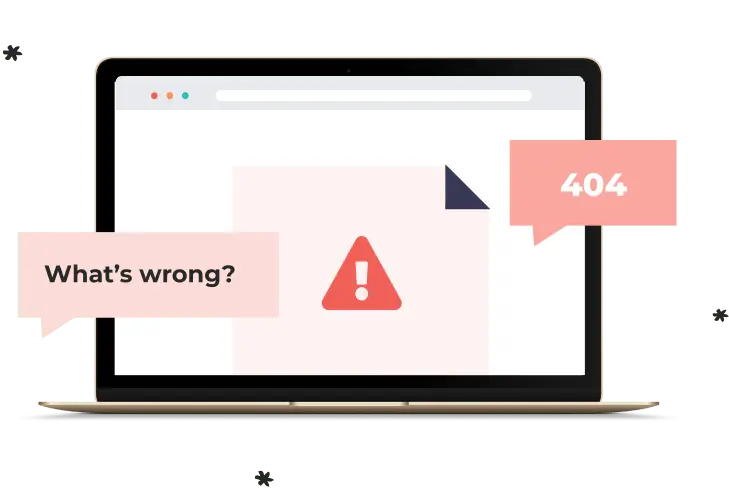
404 Oops! Our Corgi ate this page
Sorry, we could not find the page you’re looking for!
Go To HomepageWanna learn about HTTP errors?

404 (This Page!)
When you ask a web server for a website, it lets you know how everything went. This status update is called an HTTP status code – 404 is the status code for “website not found.” There are about 50 different possible HTTP Status codes and they’re all laid out in boring-sounding Internet standards documents.
200 OK
Is for when everything worked out. The web server finds the page and sends it on over to your computer along with the 200 OK, no questions asked. You don’t ever see 200 OK, you just see the website you were looking for!
400 Bad Request
Would come up if I asked you to buy me a “fSF4kjnw” tomorrow. Since it’s nothing but nonsense, the web server can only look at you sideways and say “What?”. Usually you will only see a 400 error if there is something wrong with your browser, or you followed a really broken link.
403 Forbidden
Is a pretty fun one because you only get that one if you’re clearly trying to break some rules. If I ask you to buy me lunch tomorrow – a perfectly acceptable request – you can say 403 Forbidden! and shut me down.
301 Moved Permanently
Is for pages that were in one place, then moved somewhere else. Say we decided skillcrush.com/bumblebees was far too long to type, and needed to move it on over to skillcrush.com/bees. Next time your computer asks for skillcrush.com/bumblebees, our web server would say something like: “Howdy partner! 301 Moved Permanently. You can find that page over at skillcrush.com/bees” and your browser would mosey on over to the new location. Again, you won’t ever see that one!
500 Internal Server Error
Is one you’ll get used to if you embark on becoming a programmer for the web. It’s the web server crying out for some help, because something’s broken in the code. It isn’t your fault, though, don’t worry. So, those are the greatest hits of HTTP status codes.
